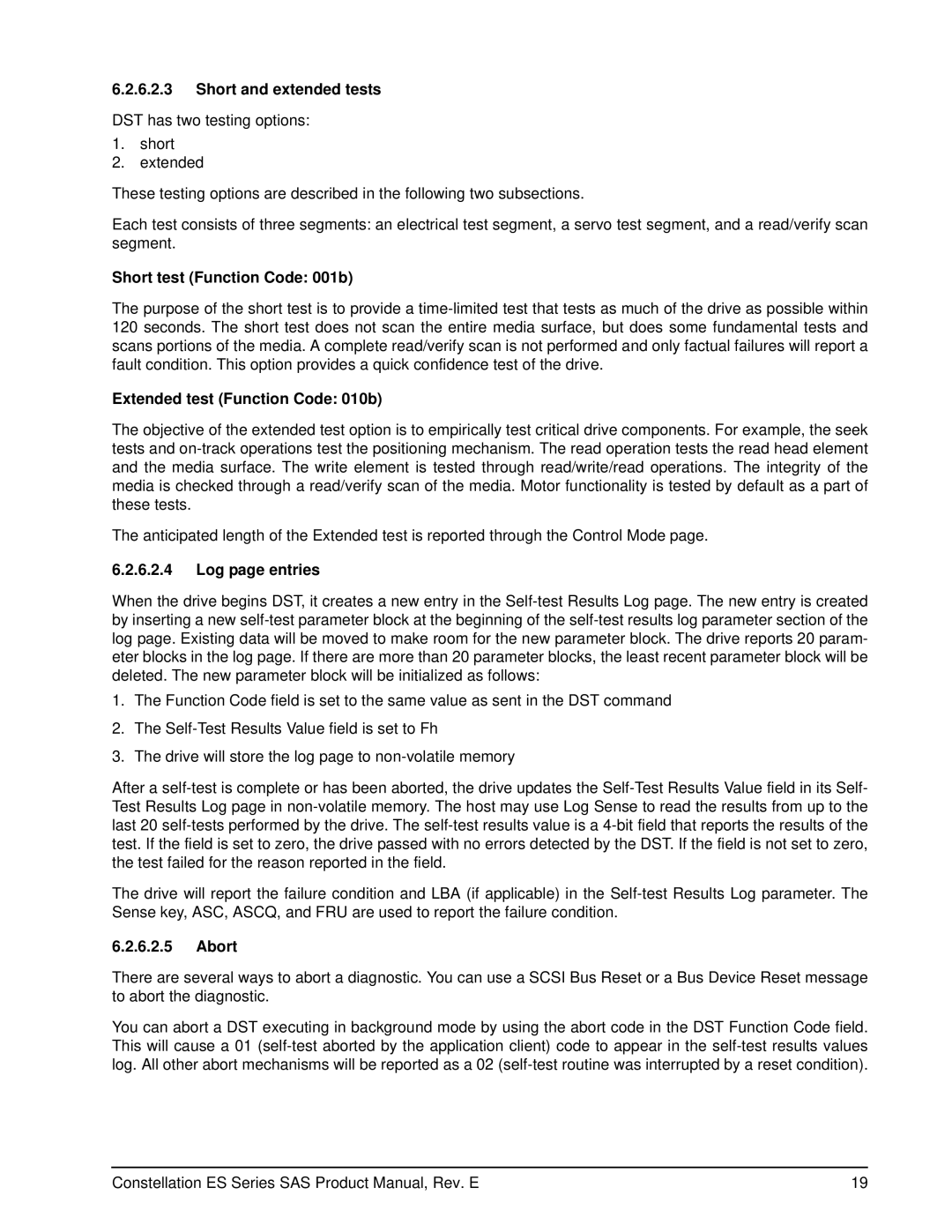ST3500414SS, ST3500415SS, ST32000445SS, ST31000425SS, ST32000446SS specifications
Seagate, a leader in data storage solutions, has introduced a range of high-capacity and reliable hard drives designed for enterprise environments, including the Seagate ST31000424SS, ST3500416SS, ST31000426SS, ST32000444SS, and ST32000446SS. Each of these models is built with an emphasis on performance, endurance, and advanced data protection technologies, catering to mission-critical applications and data-intensive workloads.The ST31000424SS is a 1TB drive designed for servers and data centers. It offers a 7,200 RPM spindle speed and a 6 Gb/s SATA interface, ensuring quick data access and transfer rates. With a 64MB cache buffer, the ST31000424SS provides enhanced read/write performance, making it suitable for applications that demand quick responses from the storage subsystem.
Similarly, the ST3500416SS is a high-capacity 500GB model, also spinning at 7,200 RPM with a 6 Gb/s SATA interface. This drive is ideal for mid-range servers and enterprise storage, providing an excellent balance of performance and capacity for users looking to optimize their storage efficiency while maintaining lower power consumption.
The ST31000426SS expands the capacity to 1TB while retaining the same reliability and performance characteristics as its counterparts. Its robust design ensures reliability in multi-drive environments, making it an appealing choice for virtualization and database applications, where performance is critical.
The ST32000444SS and ST32000446SS represent Seagate's commitment to higher capacities, with both offering 2TB of storage. They both feature 7,200 RPM speeds, 6 Gb/s SATA interfaces, and 64MB cache buffers, catering to high-demand environments such as cloud storage and data analytics. The drives also integrate advanced error recovery and data integrity features, ensuring the protection of sensitive data, which is vital for enterprise users.
Each model supports Seagate's PowerChoice technology, which optimizes power consumption without sacrificing performance, enhancing energy efficiency in modern data centers. With a broad range of capacities and performance levels, these Seagate drives provide scalable solutions tailored to meet the robust demands of today’s enterprise applications, ensuring reliability and performance for critical data operations.
